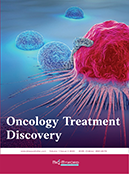Abstract
Abstract: Objective: To analyze the role of “trinity” service in the prevention and control of tuberculosis. Methods:From January 2020 to June 2021, routine tuberculosis prevention and control was carried out, and 40 newly diagnosed tuberculosis patients were included in the routine group. From July 2021 to December 2022, the “trinity” mode of prevention and control was carried out, and 40 newly diagnosed tuberculosis patients were included in the research group. The differences in referral follow-up, tuberculosis control, hospitalization rate, medical costs, etc. of both groups were compared. Results: The referral rate of 90.00% and follow-up rate of 87.50% in the research group were higher than those of the control group, and the delay rate of seeing a doctor was 7.50% lower than that of the control group, P < 0.05; the incidence of tuberculosis in the research group was 30.00%, the rate of smear-positive tuberculosis was 20.00%, the rate of smear-negative tuberculosis was 7.50%, and the rate of new smear-positive tuberculosis rate of 2.50%, all of which were was lower than those of the control group, P < 0.05; the hospitalization rate of newly diagnosed tuberculosis patients in the research group was 35.00%, which was higher than that of the control group (10.00%), P < 0.05; the medicine expenses (1019.04 ± 62.42 yuan) and examination expenses (1687.48 ± 75.36 yuan in the research group were higher than those of the control group, P < 0.05. Conclusion: After implementing the “trinity” service, infection can be effectively prevented and controlled, and the hospitalization rate and referral follow-up rate can also be increased, but the overall medical expenses are still relatively high.
References
Kou W, Wang D, 2022, Evaluation of the Application Value of Tuberculosis Knowledge Education in Tuberculosis Prevention and Control. Chinese Science and Technology Journal Database (Digest Edition) Medicine and Health,
(10): 157-159.
Yang Q, 2022, Research on Health Education Methods and Effects of Tuberculosis Prevention in Center for Disease
Control. Chinese Science and Technology Journal Database (Citation Edition) Medicine and Health, 6(3): 189–191.
Wang M, Zhang Y, Wang H, et al., 2022, Application of “Trinity” Tuberculosis Management Model in Post-Discharge
Management of Tuberculosis Patients with Diabetes. Guizhou Medicine, 46(5): 770–771.
Li Y, 2022, The Application Value of Health Education and Psychological Intervention in the Prevention of
Tuberculosis in Adolescents. Chinese Clinical Pharmacology and Therapeutics, 27(3): 25–26.
Peng X, 2022, Evaluation of the Application Value of Tuberculosis Knowledge Education in tuberculosis Prevention
and Control. Chinese Medicine Guide, 20(19): 94–96.
Zheng S, 2021, Application of Tuberculosis “Trinity” Service Model in Tuberculosis Prevention and Control. Chinese
Science and Technology Journal Database (Citation Edition) Medicine and Health, 8(2): 33–34.
Wang Q, Lan A, Zhou M, et al., 2020, The Effect of the Trinity Service Model in the Prevention and Control of
Tuberculosis. Great Doctor, 5(16): 89–91.
Zhu C, Guo X, Zhang J, 2019, Application Effect of Tuberculosis “Trinity” Service Model in Tuberculosis Prevention
and Control. Jilin Medicine, 40(11): 2688–2689.
Liu P, 2022, Research on the Application Value of the Three-in-One Service Model in the Prevention and Control
of Tuberculosis. Chinese Science and Technology Journal Database (Abstract Edition) Medicine and Health, 8(11):
–153.
Wang Y, 2022, Analysis of the Effect of the Trinity Service Model in the Prevention and Control of Tuberculosis.
Chinese Science and Technology Journal Database (Full Text Version) Medicine and Health, 7(8): 51–52.
